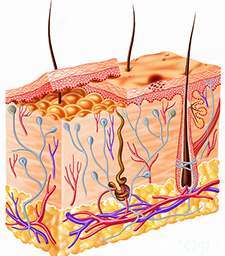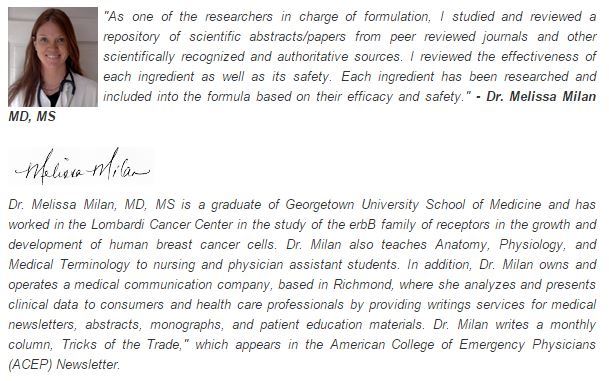Information on Stretch Marks

Stretch marks, also known as striae/gravidarum, are a type of skin scarring that affects the layers of human skin - the internal layer (dermis) and the external layer (epidermis). They are a unique type of scar because they only involve the dermis as there is no break in the epidermis itself. They are known to occur during times of rapid growth such as puberty, pregnancy, excessive weight gain, or even with weightlifting.
What Are Stretch Marks?

Stretch marks can occur as a natural result of the skin stretching during many phases of life, from puberty to pregnancy. Most women and men will develop stretch marks at some time throughout their lives. Stretch marks develop from tears in the dermis layer of the skin, leaving internal skin damage with an external visual scar. Some of the body parts susceptible to stretch marks include the stomach, hips and thigh, breast, upper and underarm, lower back, legs, buttocks and shoulders among others. Stretch marks can be categorized in two distinctive classes: red and white stretch marks (some make the distinction between new and old).
Red stretch marks, also called pink stretch marks by some people, represent the initial stage of a stretch mark formation of any kind. When the skin is stretched, for example due to pregnancy or weight gain, red or pink lines appear beneath the skin surface due to injured fiber tissue. The red stretch marks however change color as the scarring heals and the inflammation reduces. Red stretch marks can be treated and made to fade with effective treatment, due to their immaturity.
White stretch marks are old red or pink stretch marks that have altered to a silvery color. White stretch marks are resistant to some of the stretch mark treatments. They may fail to disappear completely or will take a long time for them to fade. Scientifically proven stretch mark products containing proven ingredients will provide the most effective method of fading and preventing these difficult to remove scars.
Basically, red, pink or purple stretch marks are considered new, (typically less than a year old). Marks that are older than a year usually appear as silvery or white. Dermatologists usually consider red or purple stretch marks easier to treat, because the skin is still in the process of trying to heal. Most dermatologists suggest regular ongoing daily treatment to promote elasticity and increased moisture content in the skin.
What are the Causes of Stretch Marks?

The theory behind different types of stretch marks is not definitive, however, there are two major theories for why they appear. It is believed that they develop for several different reasons which may include the tissue beneath the skin growing faster than the skin itself or a hormonal imbalance. They are more likely to develop during pregnancy, adolescence and when a person is in physical training.
Human skin consists of three layers: the dermis, epidermis and the subcutis. The middle layer, the dermis, consists of large amounts of collagen, which plays a role in keeping the skin firm. The theory that is most widely accepted about stretch mark formation is that, in any period of rapid growth, collagen production isn't always able to keep up with the extreme stretching of skin. The dermis can sometimes tears and loses its elasticity, resulting in discolored scarring of the skin, or a stretch mark. The dermis layer, contains elastin fibers, which are responsible for the production of collagen which affects the skin's elasticity and firmness. Usually when the skin gets overstretched the dermis layer (which lies between the epidermis and hypodermis) is susceptible to tearing, which in turn may affect the effective production of collagen, negatively affecting the skin's natural ability to return to its original position. This then results in stretch marks appearing on the surface of the skin.
While the skin-stretching theory is commonly accepted, some experts argue that a hormone called glucocorticoid could be responsible. The body produces this hormone in high concentration in adolescents, pregnant women, bodybuilders and the obese. Some experts believe that this hormone prevents collagen from forming, causing a reduction in elasticity. Thus, it is possible that the stretch marks is caused by the hormone increase, rather than the growth itself.
Growth spurts in adolescents or sudden weight gain have been known to cause stretch marks. Most often, they occur where fat is usually stored. Some typical areas for growth-spurt related types of stretch marks include the back, top of the arms, breasts, hips and inside of the thighs. Some studies demonstrate that as many as 70% of adolescent girls and 40% of adolescent boys are affected by striae.
Bodybuilding or weightlifting can also lead to stretch mark development. In these cases, marks usually appear on the muscles that are growing/developing, such as the biceps or calves. Body builders who use steroids, such as cortisone, are especially susceptible to these types of stretch marks.
Perhaps the most common group affected by stretch marks are pregnant women. stretch marks appear usually around the third trimester and as the baby grows inside, the uterus expands and the skin is stretched very tightly over the abdomen. Additionally, a woman's breast size will also increase in preparation for breastfeeding. Studies suggest that anywhere between 70 to 90% of pregnant women will develop stretch marks. They are considered a completely normal part of pregnancy, although most women dread developing them.
Other causes can include genetic susceptibility from conditions such as Cushing's disease and adrenal disorders, whose symptoms include skin conditions that can lead to stretch marks.
How To Treat Stretch Marks?
 For some people, stretch marks are devastating, they are unsightly and can affect a person's self confidence drastically even so far as to influence the clothes they wear and how they live their life. Therefore, these skin imperfections make many people seek effective ways of how to get rid of stretch marks and stop them returning ever again.
For some people, stretch marks are devastating, they are unsightly and can affect a person's self confidence drastically even so far as to influence the clothes they wear and how they live their life. Therefore, these skin imperfections make many people seek effective ways of how to get rid of stretch marks and stop them returning ever again.
Most types of stretch marks usually fade in time, but they are unlikely to disappear entirely unless you nourish and repair the skin to keep it supple, encouraging healthy skin cell turnover and stimulating collagen growth so that the scar tissue eventually goes away. These oils must be massaged in a circular motion into the skin, daily. Eating a balanced diet (plenty of fresh fruits, vegetables and whole grains) rich in vitamins and nutrients can help to lessen stretch marks as well.
References:
1 - https://www.asds.net/_PublicResources.aspx?id=8226
2 - http://www.medicinenet.com/stretch_marks/article.htm
3 - http://www.nhs.uk/conditions/Stretch-marks/Pages/Introduction.aspx







 StretchOff™'s formulation of effective ingredients and strong name recognition have brought praise from both customers and health professionals alike. To learn more about the research and data behind StretchOff™ , please visit our "
StretchOff™'s formulation of effective ingredients and strong name recognition have brought praise from both customers and health professionals alike. To learn more about the research and data behind StretchOff™ , please visit our "




